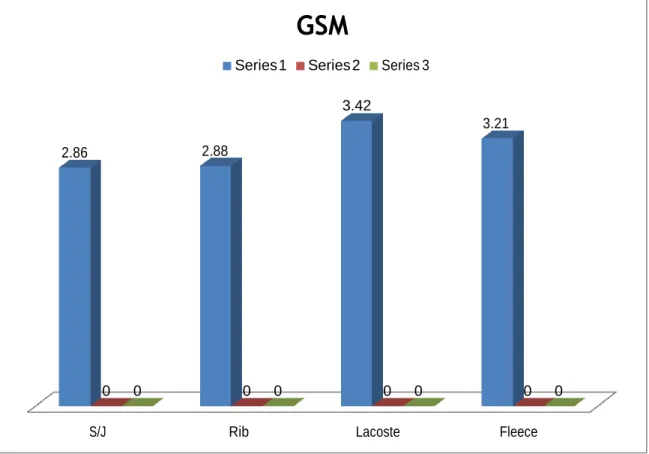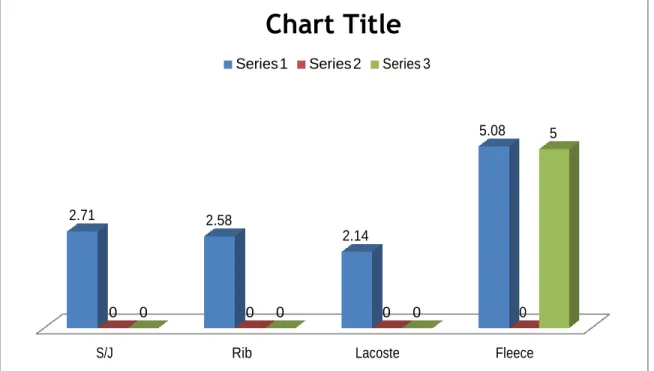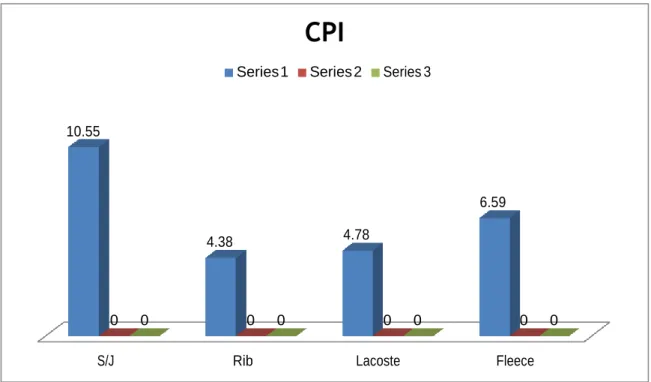We declare that this project was done by us under the supervision of Tanvir Ahmed Chowdhury Assistant Professor, Department of Textile Engineering, Faculty of Engineering, Daffodil International University. We also declare that neither this project nor any part of this project has been submitted elsewhere for the award of any degree or diploma. First, we express our gratitude to Almighty Allah for his divine blessing that enables us to successfully complete this project.
We are grateful to our supervisor Tanvir Ahmed Chowdhury, Assistant Professor, Department of Textile Engineering, Faculty of Engineering, Daffodil International University. His endless patience, scientific guidance, constant encouragement, energetic supervision, constructive criticism, valuable advice, reading many inferior drafts and correcting them at all stages have made it possible to complete this project. We observed many fabrics being handled on open drying machine from loading to unloading and collected samples and we also recorded the parameter data (GSM, Dia, WPI, CPI, Stitch Length, Yarn Count) both before and after. We thoroughly reviewed the data and calculated the rate of change of various properties of different knitted fabrics.
Tumble dryers are an important and primary machine for textile finishing. We collected data from an open dryer from santex. In this project we have observed many different compositions of single jersey fabric, Rib fabric and many other knitted fabrics.
INTRODUCTION
Objective of the study
The overall purpose of the research is to establish a basic structure for the effects of dryers on different knitwear. To assess GSM, diameter, WPI, CPI, stitch length, shrinkage, yarn count change of a knitted fabric for drying.
Literature Review Literature Review
Knit Modeling
Weft or filled knits are made from a yarn that is fed horizontally into knitting machine needles. Two common methods are used to create knitted fabrics - warp knitting and weft knitting, and each process produces a variety of knitted fabrics.
Knitted Fabric Knits
Knitted Fabric Types
- Flat or Jersey Knit Fabric
- Purl Knit Fabric
- Rib Stitch Knit Fabric
- Interlock Stitch Knit Fabric Fabric
- Double Knit Fabric
- Warp Knitted Fabric
- Tricot Knit Fabric
- Raschel Knit Fabric
- Cable Knit Fabric
- Bird’s Eye Knit Fabric
- Pointelle Knit Fabric
- Intarsia Knit Fabric
- Jacquard Knit Fabric
- Knitted Terry Fabric
- Knitted Velour Fabric
- Sliver Knit Fabric
- Fleece Knit Fabric
Rib Stitch Knits are made of stitches applied to both sides of the thread and form walled columns on the front and back of the weave. Half cardigan is made of one knit on both needle beds and the other knit on the front and all knitting needles on the back. Half Milano consists of running one round of each stitch on both needle beds and only knitting on the front handles on every other round.
The entire Milano consists of the same weave on both napkins, a second weave on the front napkins only, and a third weave on the back napkins only. Seams prevent shedding and create garments that don't roll up or twist at the ends. There are vertical kneading loops on the front, while the horizontal floats on the back of the material are inclined.
There are clearly defined vertical walls on the front surface and cross-sections on the back surface. The texture of the fabric has an intriguing material like braids as the loops flow together. The stitch creates an interesting effect on the surface of the textile that looks like a bird.
The feminine nature of the fabric makes it perfect for holding the heads of women and children. French Terry The groups in the fabric are not and the fabric is used in the technical back. Woven velors are fabrics made from piles of soft fibers that stand out on the face of the material.
These often consist of a collection of yarns that form piles on the surface of a cloth, such as in knitted terrycloth. Sliver knit fabrics are longer and thicker than the other pile jersey on the fabric layer. Such additional threads are not knitted, but are held by the loops in each corner of the fabric.
Dryer Machine
Effect of dryer machine on various knitted fabric
In knitting, garter stitch is a pattern in which vertical stripes in stockinette stitch alternate with vertical stripes in reverse stockinette stitch. The fabric does not tend to curl when they are even, unlike the stockinette stitch thread. In this process the fabric with GSM 172 was used which required lower temperature than other &.
Materials
Method Of the calculation of fabric GSM
- Method of the calculation of Stitch Length
- Method of the calculation of fabric width
- Method of Calculation of yarn Count
- Method of calculation of WPI
Method of Evaluation
Yarn counting refers to the numerical expression by direct or indirect system of the fineness and coarseness of a yarn. For an indirect system, more yarn is thin and less yarn is thick. WPI refers (ridges per inch), which means there are no ribs per inch in a knit fabric.
CPI refers to (curve per inch) which means there is no hinge loop per inch in the knit.
DISCUSSION OF RESULT
Change in GSM of different types fabric after drying process
The changes in GSM for different types of fabric were used after the drying process to draw the following Figure 4.1. GSM stands for 'grams per square meter' and is the metric measurement of the weight of a substance. Gsm or grams per square meter of a fabric can be changed in dryer as well as in punches and in dryer m/c also.
The diagram attached above contains some GSM change data of fabrics before and after the fabric treated in an open width dryer. In the graph we see that the gsm of the single jersey fabrics has decreased by 4 or 5 grams. The drying machine basically changes the dia and wpi/cpi of a fabric and gives a vibration to the fabric.
Finally, we can see from the diagram that the change % values of GSM of different types of fabrics after the drying process are different. At this stage, the percentage of GSM of Lacoste fabrics is higher than that of other fabrics and the percentage of Rib fabrics is lower than that of other fabrics.

Change in Stitch length of different type’s fabric after drying process
Stitch Length
Change in Diameter of different type’s fabric after drying process process
After the drying process, the changes in diameter of different types of fabric were used to draw the following Figure 4.3. The diameter of a fabric can be changed in dryer as well as in stanter and also in dryer m/c. The chart attached above contains some fabric slide change data before and after the fabric was treated in an open width dryer.
From this diagram we can see that after drying, the change in % diameter of single jersey is greater than that of Lacoste and Rib & less than that of fleece. From this diagram we can see that after drying the % change in diameter of Rib fabric is lower than Single Jersey & Fleece fabric and higher than Lacoste fabric.
Chart Title
Change in yarn count of different type’s fabric after drying process process
After drying process, the changes in yarn count of different types of fabric were used to draw the following figure.
Yarn Count
- Change Wales per Inch of different type’s fabric after drying process
- Change Course per Inch of different type’s fabric after drying process
- SAMPLE ATTATCHMENT
- CONCLUSION
From this diagram we can see that after drying, the yarn count change rate of ribbed fabric is lower than Lacoste and Fleece and higher than Single jersey. From this diagram we can see that after drying, the thread count change rate of Lacoste fabric is higher than that of ribbed fabric, single jersey fabric and fleece fabric. From this diagram we can see that after drying, the yarn count change rate of fleece fabric is lower than that of Lacoste and higher than that of single jersey and ribbed fabric.
After the drying process, the changes in roll per inch of different types of material were used to draw the following Figure 4.5 [9,10]. From this diagram we can see that after drying the change % of waft per inch of single jersey fabric is higher than Lacoste fabric, Rib & Fleece fabric. From this diagram we can see that after drying the change % of waft per inch of Rib fabric is lower than single jersey and higher than Lacoste & Fleece fabric.
From this diagram we can see that after drying the change % of waft per inch of Lacoste fabric is lower than Rib fabric, single jersey fabric and higher than Fleece fabric. From this diagram we can see that after drying the change % of weft per inch of Fleece fabric is lower than Rib fabric single jersey fabric and Lacoste fabric. Finally, from the diagram we can see that the change % values of Wales per inch of different types of material after drying process are different.
After the drying process, the changes in ridges per inch of different types of fabric were used to draw the following figure. From this diagram we can see that after drying, the percentage of natural change per inch of single jersey fabric is higher than that of Lacoste fabric, Rib & Fleece fabric. From this diagram we can see that after drying the change% natural per inch of ribbed fabric is lower than that of single jersey, fleece fabric and higher than that of Lacoste.
From this diagram we can see that after drying the natural change % per inch of Lacoste fabric is lower than single jersey fabric and Fleece fabric and higher than Rib fabric. From this diagram we can see that after drying the change % naturally per inch of Fleece fabric is lower than single jersey fabric and higher than Lacoste fabric & Rib fabric. Finally, from the diagram we can see that the change% values obviously vary per inch of different types of material after drying process.




